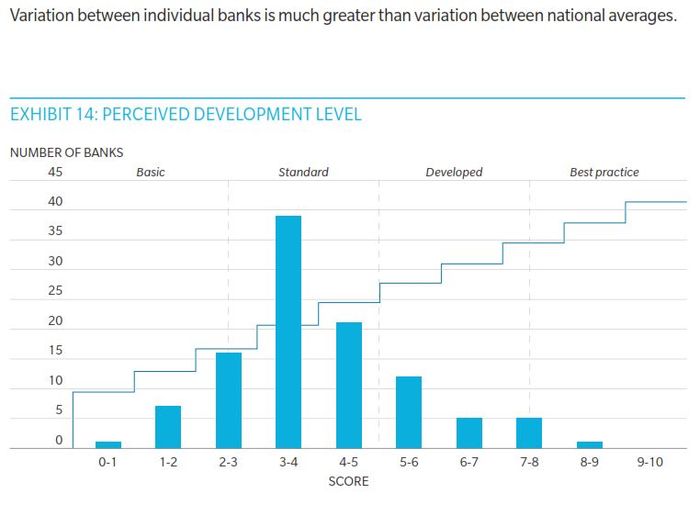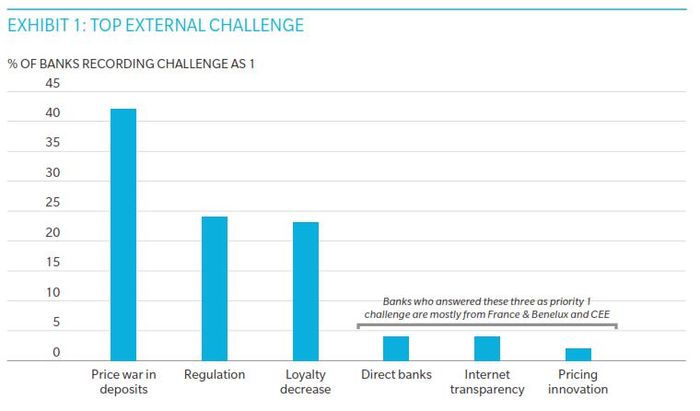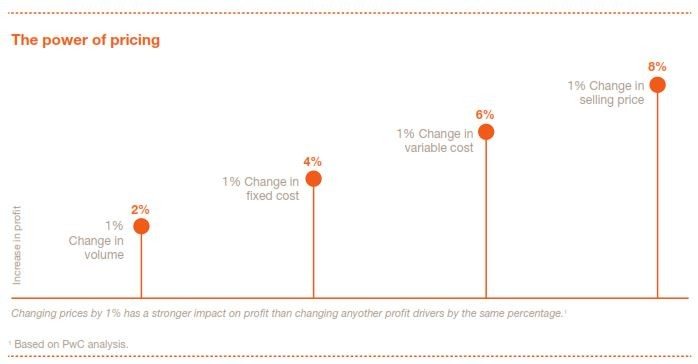
How much profit does a bank make per annum on a typical retail bank deposit account?
It’s a simple question. What is the total revenue a bank generates from the average retail bank account – the costs? Do you know? Does your bank?
I’m not so sure, and it’s a conundrum that drives to the heart of the free bank model.
Banks generally calculate profit (P) based upon the amount of credit a customer takes, which generates margin (M) profit; along with the additional fees (F) charged due to unexpected overdrafts, withdrawals and exceptions; less the total cost of the retail operation divided by the number of deposit accounts (C).
In other words:
(M + F) – C = P
You would think it was that simple, but it’s not.
After all, much of the branch operation is dedicated to corporate and commercial banking services; providing processing for small businesses and merchants; and delivering advice, rather than processing.
How do you calculate the pricing and profitability of the sales and advertising the branch network delivers? How do you take that out of the model? Now that we have branch, call centre, internet, mobile and digital bank services, what are the layers of cost structure that this builds into the model? How do you cost allocate these services against each deposit account, and what charges do you allocate to each deposit account to cover these costs?
These are questions that my economics professor asked years ago, and I still have not found great answers. I’ve found answers, just not great ones. So I toddled off to google and found that it’s still a major issue for many banks. For example, EFMA and Oliver Wyman performed a survey looking at European bank pricing practices in 2012 which found that:
Reference prices are usually set by staff responsible for a Product (e.g. mortgage or credit card) rather than staff responsible for a Segment (e.g. affluent or small business)
- Most banks apply few and unsophisticated techniques for setting reference prices, with most depending on “benchmarks”: i.e. following competitors.
- Price discretion varies by country (e.g. more in Spain, less in the UK) and by product (e.g. more for mortgages, less for credit cards).
- The pricing discretion of sales staff is rarely guided by customer analytics or disciplined by price-based incentives.
In fact, according to this survey of over 100 banks, most have pretty under-developed capabilities.

Even though, for most, this is their #1 external business challenge.

According to PwC, a large consulting group: “a 1% improvement in pricing will have 1.5 to 4.5 times the margin impact of a 1% cost improvement. Moreover, between 1% and 5% of value is lost across all industries because companies do not know enough about their customers’ willingness to pay, or do not have the ability to profit from this knowledge.”

According to BC&T, a small consulting group, there are a range of principles for good bank pricing strategy including:
- Price integrates the volatility (risk) of project future cashflows
- Individualise all risks, price and manage to optimise their variance/covariance
- Integrate price elasticity to client solvency, not only to client segments
- Define, quantify and manage business risk
… I’m not going to list all of them, because it’s all about driving credit, pricing for margin, managing risk and ensuring debt recovery. In other words, it’s complex and requires strong management focus.
If a 1% improvement in pricing can have a 4.5x impact on margins compared to a 1% cost reduction, this is important.
What it really means is that banks need to invest in data analytics to get their pricing right. The data analytics needs to incorporate all the elements of infrastructure, operations, staff and building costs, and align this on a 1:1 pricing model with customers, segments, risks and opportunities.
Phew! No wonder no bank can tell me the profit of their average deposit account.
Obviously, lots of small and large consultancies have solutions to this therefore, such as this white paper by Deloitte: Towards transparency and freedom of choice: an unbundled model for retail banks, and this book from Simon Kucher & Partners: Price Management in Financial Services: Smart Strategies for Growth.
However, I always go back to my roots of data warehousing and systems aligned to Don Peppers and Martha Rogers 1:1 Marketing, and believe that you can only really get a great pricing model in a bank if you have a great systems model.
Unsurprisingly, lots of vendors and consultants agree with me but, rather than quote them, here’s research from Deutsche Bank that concludes:
The decisive criteria for successful pricing are as follows:
1. Information as a central basis
Price-setting decisions are only as good as the underlying information, for instance on market developments, competitors and customer preferences. The capacity to identify the relevant information, assess it and take quick decisions on this basis will gain even more importance in the future.
2. Consistent integration of price setting strategy into overall strategy
Pricing must fit, both from the customer's point of view and in relation to the organizational and operating processes within the company.
3. Communication of pricing and related services
Greater transparency in particular requires not only greater efforts by banks to better communicate their pricing decisions but also the value proposition of products and services.
Meanwhile, don’t worry too much if you think your banks’ pricing strategy is naff, as 95% of Fortune 500 companies have no idea how to get their pricing right:
Data from the Professional Pricing Society indicates that less than 5 percent of Fortune 500 companies have a full-time function exclusively dedicated to pricing. Research from McKinsey & Co. shows that less than 15 percent of companies do any systematic research on this subject. Similarly, only about 9 percent of all AACS-accredited business schools offer courses that emphasize pricing significantly. [Quote from Stephan Liozu in Smart Business]
… so you’re not alone (although it’s still no excuse).
Chris M Skinner
Chris Skinner is best known as an independent commentator on the financial markets through his blog, TheFinanser.com, as author of the bestselling book Digital Bank, and Chair of the European networking forum the Financial Services Club. He has been voted one of the most influential people in banking by The Financial Brand (as well as one of the best blogs), a FinTech Titan (Next Bank), one of the Fintech Leaders you need to follow (City AM, Deluxe and Jax Finance), as well as one of the Top 40 most influential people in financial technology by the Wall Street Journal's Financial News. To learn more click here...

